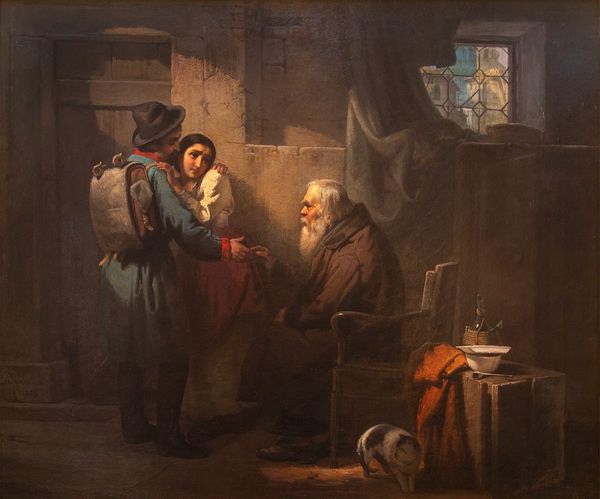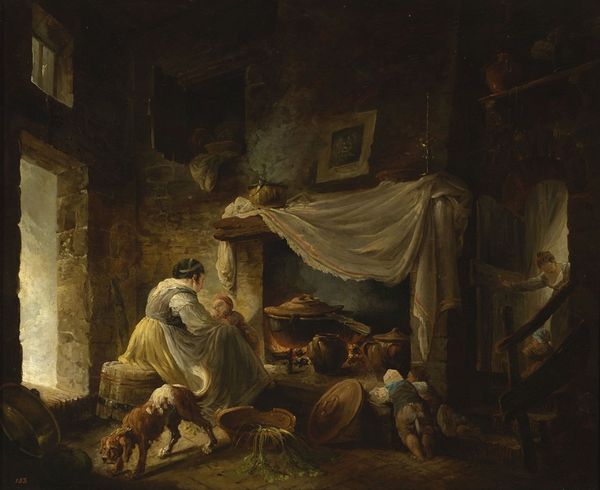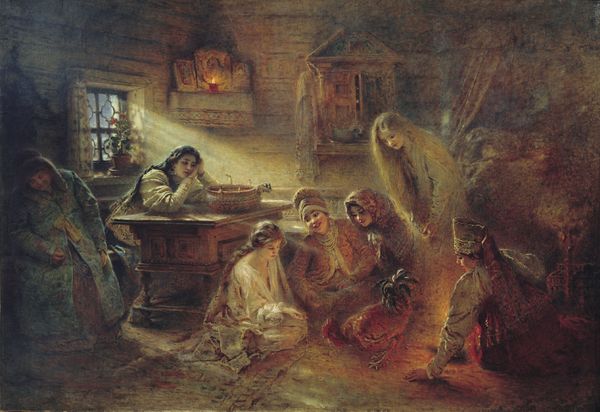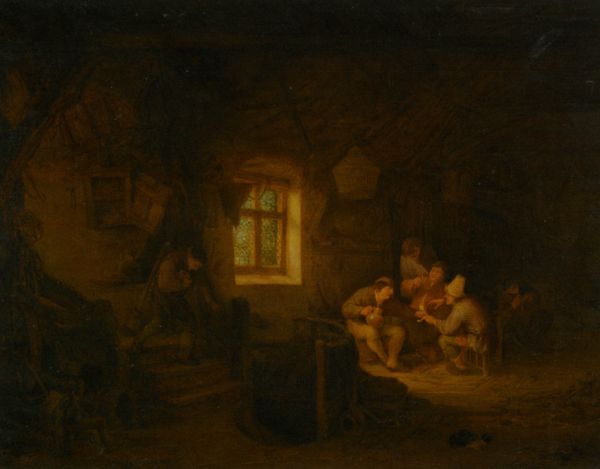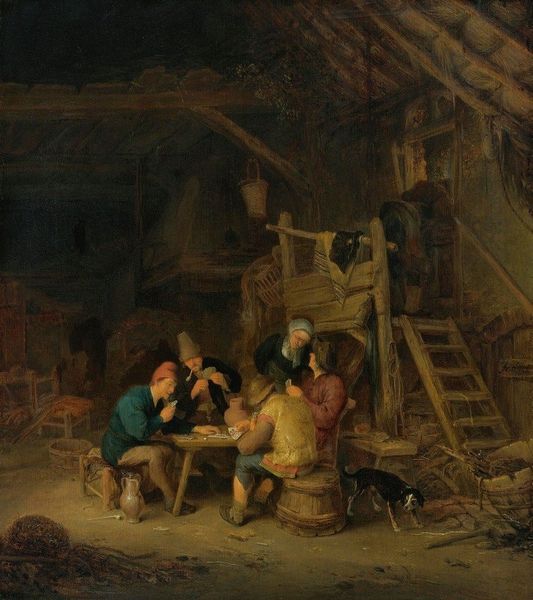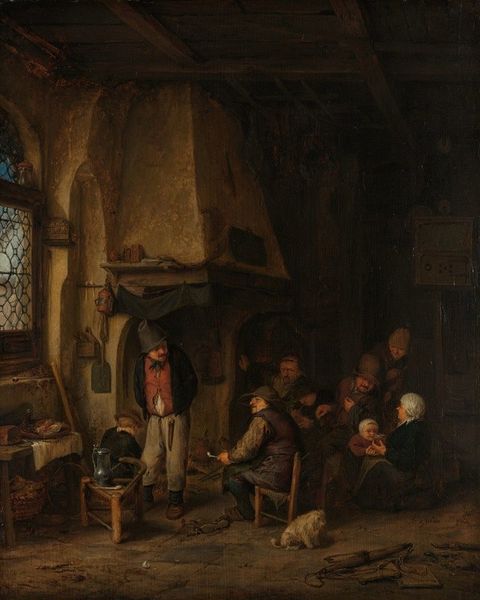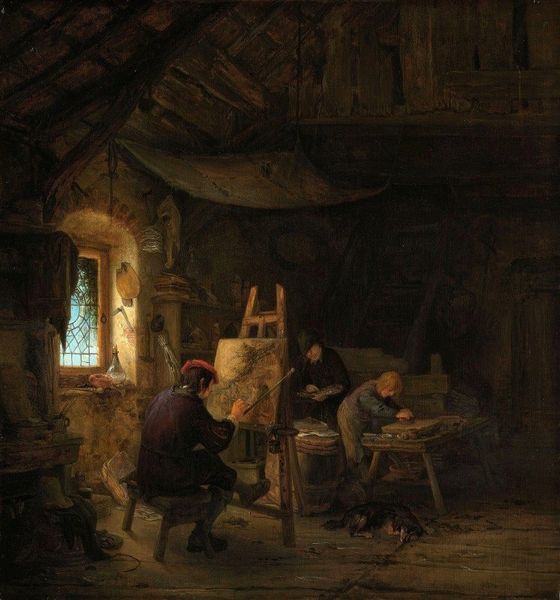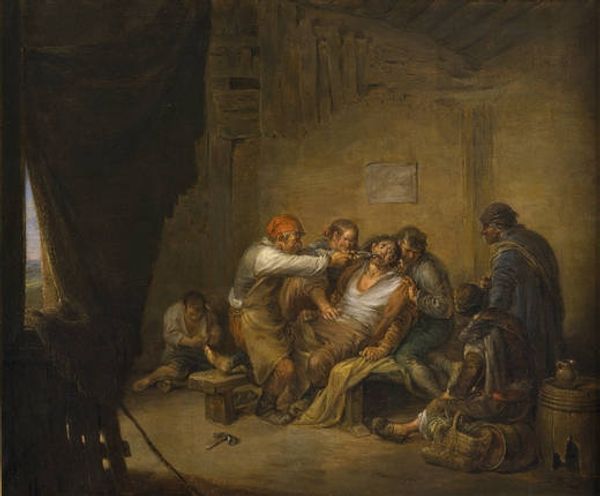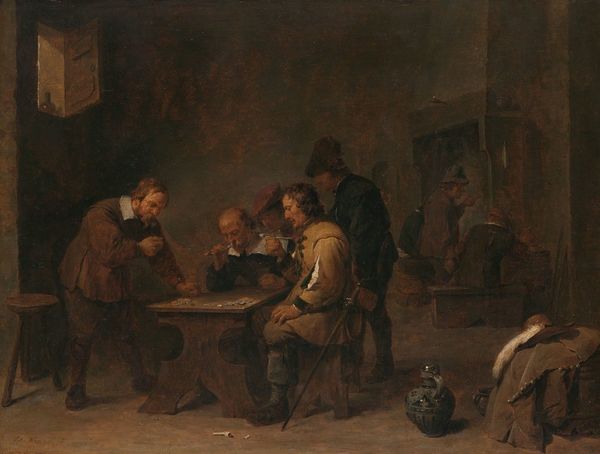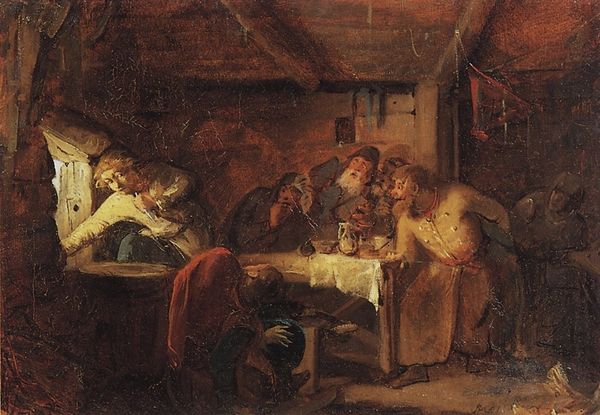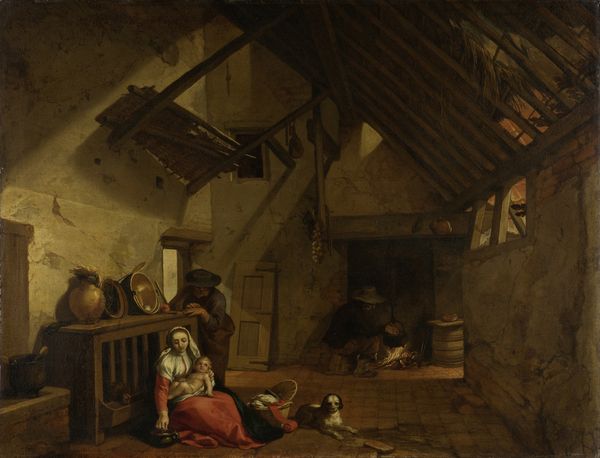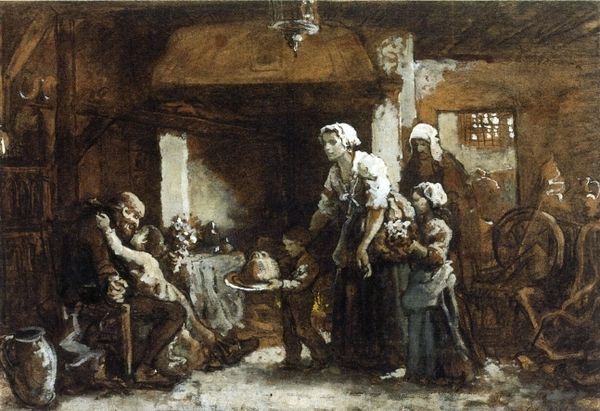
Copyright: Public domain
Editor: This is "Go, and God's Will Be Done!" painted in 1891 by Ralph Hedley, rendered in oil. I'm immediately struck by the somber mood and the contrast between light and darkness, creating a sense of impending doom or solemnity. What story do you see unfolding here? Curator: The drama certainly commands attention, doesn't it? Think about the recurring image of the fisherman, his family, and the sea. This image taps into the collective consciousness, representing not just a single family’s tragedy, but a larger narrative of loss, faith, and reliance on forces beyond our control. Editor: That makes sense. The title suggests a sense of acceptance or resignation in the face of tragedy. Curator: Precisely. Now, notice the lantern – a very literal beacon of hope amidst all this darkness. What about the visual effect? It draws your eye directly toward the sick or injured figure in the bed. Editor: Yes, and there's also a very clear narrative arc as you trace the individuals. A potential caregiver leaves the room as a man rushes in, all flanking an upset child at the center of the image. I suppose it reads right to left, doesn't it? Curator: Good observation. Each figure adds a layer to this tableau. Hedley orchestrates a powerful visual symbol of family bonds tested by external, merciless elements and forces each character into a different relationship with grief and hope. It becomes almost theatrical. What feelings does that invite? Editor: I'm left with a feeling of deep respect for these individuals who, in a time of apparent crisis, hold so tightly to a unified faith and sense of togetherness. It seems less about immediate mourning and more about the stoic realities of 19th century working class life. Curator: A poignant recognition. This interplay of darkness, light, and enduring symbols continues to resonate, reminding us of both our individual fragility and collective strength.
Comments
No comments
Be the first to comment and join the conversation on the ultimate creative platform.
